What would James Bond be without a villain? A globe-trotter with a serious sex addiction, that’s what. 007 can only have meaning when he’s got a compelling bad guy to fight. Unfortunately, there have been some serious clunkers. So let’s show some appreciation to the nefarious schemers who brought out the best in Bond by bringing out their own worst, and throw some shade at the ones we wish we could forget.
This shouldn’t be a surprise, but there are spoilers ahead.
Honorable Mention: Elektra King, The World is Not Enough (Sophie Marceau, 1999)
Hear me out on this. I have to give credit to what was almost an audacious idea: a Bond Girl who could be a villain. Not just a henchman like Xenia Onatopp or Fiona Volpe, but a full-on villain. If only producers had committed to the idea instead of half-assing it. I really want to put this here in hopes that they pick the idea up and put it to good use someday. Elektra was the brains behind the villainous operation in The World is Not Enough, which means Renard was really just a glorified henchman. Unfortunately she gets none of the glory of other villains on this list. Even after her reveal, the big showdown in the movie is all about Bond facing off with Renard, not Elektra. The idea that a Bond Girl could also be Bond’s nemesis deserves support. Until we get a true bad Bond Girl, Elektra will be here in Bond villain purgatory.
Dishonorable Mention: Maximilian Largo, Never Say Never Again (Klaus Maria Brandauer, 1983)
Never Say Never Again is not officially part of the Bond franchise, which saves Maximilian Largo from an official ranking (he would have easily made the bottom five). Never exists because a copyright lawsuit gave someone permission to make a competing Bond film as long as it was an adaptation of Thunderball. That means Maximilian Largo is a stand-in for Emilio Largo but without any of the qualities that made Emilio Largo one of the best Bond villains. I mean, he has an entire fight sequence with James Bond that takes place in a video game. I cannot yawn hard enough.
26. Renard, The World is Not Enough (Robert Carlyle, 1999)
Renard has two problems. First: he’s a red herring. Years ago he kidnapped Elektra King, the daughter of an oil magnate, and held her for ransom. She escaped after a bungled attempt by MI6 to use her as bait to kill Renard. MI6 eventually managed to put a bullet in his head, but it didn’t kill him. It’s just stuck in his brain cutting off his ability to feel. It will eventually kill him, so now he’s out for revenge on the King family and M. Or so we’re meant to believe. You see, Renard and Elektra are actually in love. She’s the one who wants revenge, so she planned the whole scheme and Renard is her willing patsy. Elektra is the real villain. Renard gets the glory of the Bond villain title–including the final showdown–but he’s actually just a glorified henchman.
Second: Renard is a perfect example of how Bond filmmakers frequently create villains with quirks and think it makes the villain interesting. Let’s be clear: Renard is exceptionally dull. He has all the personality of lumber. Not being able to feel doesn’t make him inherently interesting. On that note: the whole bit where Renard can’t feel anything is poorly defined. Are we talking about touch only? Or emotions? He seems to get angry or feel sad, but is that just the lazy script? And something else: just because you can’t feel pain doesn’t mean you aren’t being injured. For example, picking up a lava-hot rock would severely burn your hands even if you couldn’t feel it happening. That’s just lazy writing.
25. Dominic Greene, Quantum of Solace (Mathieu Amalric, 2008)
Dominic Greene is what you get when a Bond villain utterly lacks qualities that might make him interesting or dangerous. To be fair, director Marc Forster deliberately wanted Greene to represent corporate greed more than physical threat. The whole idea was that Greene could be a stand-in for the type of businessman who would run Enron, intentionally pollute the world’s water supply to increase his already-overstuffed billfold, or finance terrorism to set up supply and demand for his business. The lesson we get from Quantum of Solace is that while that villain is definitely true to life, he isn’t compelling as a Bond nemesis. It’s possible, I guess. I like to support the idea that not all Bond villains need to be bent on world domination, but at least it doesn’t work in this incarnation. Dominic Greene is dull as dishwater and less than useless in a fight.
24. Gustav Graves, Die Another Day (Toby Stephens, 2002)
Die Another Day was the final stop in Pierce Brosnan’s 007 shame spiral and is a testament to how ridiculous the franchise had become. Gustav Graves, nee Colonel Tan-Sun Moon, is the epitome of everything that caused the series to need a reboot with Casino Royale. We meet our villain as Colonel Tan Sun-Moon during the opening credit sequence, when 007 surfs into North Korea and takes him and his African conflict diamond-smuggling outfit down (no, really. He surfs into North Korea). Later, those conflict diamonds are traced to billionaire playboy Gustav Graves, who turns out to be Colonel Moon after a complete genetic makeover and extensive plastic surgery. Graves has money and serious risk addiction, so he’s the kind of guy who parachutes into press conferences just before getting knighted (by the way, what is he being knighted for? Can you get knighted for publicity stunts?). He also likes ice palaces, destructive satellites, terrible puns, speed racing on glaciers, and henchmen with diamonds in their face. Everything about Graves is stupid and illogical. Toby Stephens attempts camp but only succeeds at being irritating. Why, with all the competition, is Graves the worst? Because he exemplifies the Bond franchise at its worst levels of excess and stupidity.
23. Ernst Stavros Blofeld, Diamonds Are Forever (Charles Gray, 1971)
In Bond’s early years, producers spent an inordinate amount of time trying to make ‘fetch’ happen with SPECTRE. Every bad guy and scheme tied back to SPECTRE and its boss, Ernst Stavros Blofeld. His two prior appearances as an actual villain (not just a shadowy figure) went well, but this is where Blofeld officially lost the plot. Unfortunately for Diamonds Are Forever, Blofeld peaked in the film that preceded it, On Her Majesty’s Secret Service. Blofeld closed that movie ruining James Bond’s wedding day by murdering Bond’s bride. Diamonds picks up where that movie left off. Given that, there should have been more payoff to his appearance here. Instead, Diamonds is a hot mess. The opening scene finds 007 out to avenge his murdered bride, but after that Diamonds brushes off the revenge storyline in favor of the standard ‘Blofeld is trying to take over the world and only James Bond can stop him’ plot, and I cannot tell you how disappointing it is that they passed over the interesting story to give us more of the same. And Blofeld, played here by Charles Gray, loses all of his menace and charisma. He also loses all of his interest. Seriously, this is a Blofeld that could have tried to bore Bond to death. It’s all so very try-hard, yet none of the effort pays off. Producers were undoubtedly terrified when a legal decision barred them from using Blofeld or SPECTRE again after this movie, but in the end it proved to be a breath of fresh air. If nothing else, Diamonds proved there was little life left to the man who was supposed to be Bond’s greatest nemesis. That is, until Blofeld returned in Spectre.
22. General Orlov, Octopussy (1983) and Brad Whitaker, The Living Daylights (1987) (Steven Berkoff and Joe Don Baker)
Orlov and Whitaker have the dubious distinction of being the actual criminal masterminds in their respective movies without getting any of the respect or screentime of the people putting their plans into motion. Their movies can’t really commit much energy to them, so why should we? Their presence really just makes the central scheme that much more convoluted. Both men are full of sociopathic bluster, but there isn’t anything actually scary or menacing about either of them. They’re all talk and crazy eyes. No substance at all.
21. Lyutsifer Safin, No Time to Die (Rami Malek, 2021)
You would really think the Bond villain who finally got to kill James Bond would be more memorable, wouldn’t you? Alas, he’s just a mess of tired Bond villain tropes–right down to the scarred face. And Rami Malek just can’t manage to work up any charisma, either. Plus, you have all the weird callbacks to Dr. No that don’t ultimately go anywhere. Were producers of this movie trying to mess with us after previous movies like Spectre and Skyfall had twists that tied them to franchise favorites? Whatever the reason, it just didn’t work.
20. Ernst Stavros Blofeld, Spectre (Christoph Waltz, 2015)
Blofeld returned with a whimper, not a roar. After a 44-year absence due to a legal dispute, producers were tasked with updating Bond’s old foe. But how? The campy Blofeld of You Only Live Twice would be a bad fit for the sleek, modern Bond. You’d think, then, that they’d go with the menacing, charismatic Blofeld in On Her Majesty’s Secret Service. You’d be wrong. Instead, we got the boring Blofeld from Diamonds Are Forever, but with the danger factor dialed up enough to make him a more worthy adversary. Yawn. Adding to that, Blofeld spends half the movie pretending to be Franz Oberhauser so producers could pull off a Blofeld reveal (the way we didn’t know Eve was Moneypenny in Skyfall until the final scene). Except we all knew Spectre couldn’t return without Blofeld. The Oberhauser red herring only exists to give Bond and Blofeld a backstory to explain why they hate each other. And the original Blofeld never needed motivation to be crazy. Instead, modern Blofeld was a depressed teenager mad that James got close to his father after an orphaned Bond was taken in by the Oberhausers. Modern Blofeld literally has Daddy issues.
Making things worse, they had Christoph Waltz to reintroduce Blofeld and messed it up. Waltz is adept at playing unhinged crazies–he won an Oscar for it in Inglourious Basterds. I don’t blame Waltz. He’s a great actor with material he can sink his teeth into. I suspect he got tethered by a more low-key approach to Blofeld. The script never lets him unleash the way you want him to. Basterds‘ Hans Landa is a much better villain than this iteration of Blofeld.
19. Elliot Carver, Tomorrow Never Dies (Jonathan Pryce, 1997)
To be fair, Tomorrow Never Dies had issues. The script wasn’t finalized as shooting began so everyone seemed to be making it up as they went along, prompting original villain Anthony Hopkins to smell disaster and run for the hills. Veteran stage actor Jonathan Pryce stepped in at the last minute. Even without that mess, the character was problematic. He’s a media mogul who wants to start WWIII so he can scoop other media outlets? Lame. I think filmmakers were trying to make an astute point about the dangers of a 24-hour news cycle and the intrusion of media into everyday life, but it never coalesced into anything intelligent. It doesn’t help that Pryce dialed the sleaze factor up to dangerous levels of camp. And I know this is petty, but the way he flailed his fingers one-handed on a keyboard was a ludicrous approximation of typing and it absolutely infuriated me. Plus, when 007 threw a giant drill in Carver’s direction he didn’t jump out of the way–dude just threw his arms up and screamed as it pulverized him. So long, Carver. We won’t miss you.
18. General Koskov, The Living Daylights (Jeroen Krabbé, 1987)
You know how I just said you can’t take Brad Whitaker seriously because someone else eats up his screentime as villain? That’s General Koskov. Which is funny given that Koskov doesn’t stand out much compared to his banana hammock-loving henchman–forget about how little he stacks up when you throw Whitaker in the mix. Koskov promises to be a slippery weasel, but he’s a wasted promise. He’s also an ineffective retread of other ideas. His plotline follows the same betrayal arc Kristatos did in For Your Eyes Only. We meet him as 007 is assigned to help Koskov defect from the Soviet Union, but it turns out Koskov has been playing British Intelligence for a fool. Koskov’s henchman does all his dirty work and Whitaker does all the diabolical scheming. Whitaker even gets the glory of the final showdown with 007. Koskov gets the plot moving, but once everything is in motion he’s pretty inconsequential. The only thing that makes him rank higher than Whitaker is that even The Living Daylights doesn’t seem to know how to fit Whitaker into the movie. At least Koskov feels central. And hey, at least he has charisma.
17. Stromberg, The Spy Who Loved Me (Curd Jürgens, 1977)
With all the hullabaloo over the Bond Girl being a spy sworn to kill 007 plus the introduction of the beloved henchman Jaws, odds are you can’t even name the villain in The Spy Who Loved Me. You aren’t missing much. Stromberg is basically a creepy old man who hangs out in a lavish underwater lair and masturbates to sharks with his webbed hands (which are barely seen). In the world of Bond villains, he’s like a registered sex offender under house arrest. Okay, for real Stromberg hangs out in his lair because he loves the ocean. And he wants to instigate nuclear war between the U.S. and Russia so the world can start over with its underwater denizens. Or something. My version is funnier. With all the effort that went into the nuclear showdown, the conflict with the Bond Girl, and Jaws’ literal scenery-chewing, it’s a pity no one thought to make sure the bad guy was interesting. Or even memorable. Even the final showdown with Stromberg is a snoozefest except for the fact that 007 kills Stromberg by shooting him in the penis. Seriously. I’m not making that up.
Hang on a second, Stromberg wants to start the world over with fish? Is that even supposed to make sense?
16. Hugo Drax, Moonraker (Michael Lonsdale, 1979)
Hugo Drax is Hitler in space. That’s the premise of the execrable Moonraker. Well, that and cashing in on Star Wars‘ success. When the Moonraker shuttle goes missing, 007 is sent to Drax’s research lab (where the shuttle was built) to find out what happened. Drax handles 007’s investigation with the subtlety of Mr. Burns on The Simpsons. He tries to have Bond killed several times, yet 007 leaves to investigate elsewhere despite obviously being at ground zero for batshit crazy evil. Eventually it turns out Drax is planning to destroy all human life with biological weapons. He and his favored genetic specimens will be hanging out in space on Moonraker in their mustard-colored disco spacesuits (why Drax stole his own shuttle is unknown). Once Earth’s air is hospitable again, they can return and repopulate the planet. He’s Stromberg without the fish.
Drax is one of 007’s least subtle bad guys and his plan for world domination is full of serious plot holes. But while Moonraker is in a race to the bottom when it comes to the worst Bond movies, Drax surprisingly isn’t that bad. He’s at least interesting. And he seems dangerous. He also has one of the most famous demises in the Bond universe, even if it does call a little too closely to Goldfinger’s exit.
15. Alec Trevelyan, GoldenEye (Sean Bean, 1995)
Alec Trevelyan (formerly 006) started as a good idea: a Bond villain that’s a twisted version of Bond. The execution wasn’t good, however. Producers didn’t do anything compelling with the idea, which is a shame because later we’ll see what happens when you get a well-executed version of the agent-gone-bad concept. As played by Sean Bean (who was considered for the role of 007 before Pierce Brosnan got the part), Trevelyan is kind of bland. He’s the Ken doll of Bond villains. On top of the bland factor, his backstory doesn’t make sense at all. We meet him as 006 and are meant to think we witness him dying. Nine years later, Trevelyan turns up as the head of a crime syndicate. Turns out he’s a descendant of Cossack clans that collaborated with Nazis during WWII, and he infiltrated MI6 by becoming an agent as part of his elaborate revenge scheme… except none of that makes sense. Why infiltrate MI6 at all? All he did is fake his death and spend nine years building a criminal organization. Why not just do that in the first place? Once he faked his death he made his MI6 contacts useless. He doesn’t even use any of the intelligence he gathered as an agent, so what was the point? Other than to befriend James Bond and betray him, making the whole thing personal, of course, but that only works for the script, not Trevelyan’s plan, so… Yeah. In the final analysis Alec Trevelyan is a waste of a good idea and a gaping plot hole.
14. Rosa Klebb, From Russia With Love (Lotte Lenya, 1963)
Rosa Klebb is one of only two women who vaguely qualify for the villain title. And just like Elektra King, Klebb is denied the dignity a full Bond villain merits. What’s particularly disappointing is that Rosa Klebb is treated like a henchman in From Russia With Love. As a high-ranking SPECTRE agent, she’s essentially following the mostly unseen Blofeld’s orders. She’s a middleman, with the orders coming from Blofeld and henchman Red Grant doing the dirty work. And while she came at 007 with poison-tipped knives hidden in her shoes in the final showdown, she was defeated with a chair. Not broken over her head, mind you. She was literally pinned to the wall. With a chair. But boy, does Lotte Lenya make her a mean, memorable nemesis anyway.
13. Kamal Khan, Octopussy (Louis Jordan, 1983)
Kamal Khan’s biggest crime as a Bond villain is that he wasn’t very memorable. A big part of that is that he had to share the spotlight with two other villains, a diabolical henchman, and Octopussy’s army of strangely dressed women. There isn’t much room for Khan to breathe with all that. You’ve got General Orlov chewing scenery, Octopussy beating a path to redemption while bedding 007… it’s too much for a decent bad guy to bear. Not to mention there’s literally a circus going on. It’s a shame because Khan himself could have been a slick bad guy in the Kristatos tradition, but without a moment of true villainy he only achieves ‘slick douchebag.’
12. Le Chiffre, Casino Royale (Mads Mikkelson, 2006)
Le Chiffre has a unique look and menacing charisma, but he and Rosa Klebb have the same problem: he’s essentially a middle man. Bond and MI6 are after him because they want him to sell out the shadowy people he works for, not because he’s a villain in his own right. He has his own thugs, but he’s mostly chased by other people’s thugs. He’s really just a devious man who doesn’t usually get his hands dirty but is stuck in a desperate situation. He isn’t out to take over the world, he’s trying to save his own life. I would never call him one of the worst Bond villains, but these qualities do make him problematic with all the other nefarious characters he is competing against. It’s a shame, because Mads Mikkelson makes a superb Bond villain. And Le Chiffre’s bloody tears are one of the more effective oddities in the Bond canon.
11. Max Zorin, A View to a Kill (Christopher Walken, 1985)
Some may disagree that billionaire Max Zorin is so high on this list, but I’ve already gone on record as saying that A View to a Kill is the only Bond movie that succeeded at being a full-on camp spectacle. A lot of that success comes down to Christopher Walken’s perfectly Christopher Walken performance. Max Zorin is a business magnate and former KGB operative who wants to destroy Silicon Valley with an earthquake to monopolize the world’s microchip business. I mean, just listen to how ridiculous that scheme sounds. Yet it works. From his frightening yellow hair to his over the top theatricality, Walken made Zorin a force to be reckoned with and laugh at simultaneously. So many Bond villains get caught up in being bizarre that they fail to be menacing–or even a good villain. Zorin manages it. OK, a lot of that menace comes from his henchman May Day, but once she’s out of the picture Zorin is perfectly at ease commandeering a blimp and coming after 007 with an axe on the Golden Gate Bridge.
10. Sanchez, Licence to Kill (Robert Davi, 1989)
In contrast to Le Chiffre, Sanchez has no problem getting his hands dirty. He loves it. He has his hands in all kinds of dirty businesses. He heads a ruthless drug cartel. He has a ludicrous cult acting as a front for part of his drug empire. Maybe he should learn to focus a bit. His evil is a little scattered. And not only did he maim beloved CIA agent Felix Leiter with a shark, he murdered Leiter’s wife in cold blood. On their wedding night. So it’s probably not a good idea to piss Sanchez off. Luckily, Leiter’s Best Man James Bond was on hand to track Sanchez down for revenge. Sanchez is one of Bond’s most ruthless, coldblooded adversaries. The only problem (other than his focus) is that he’s frequently forgotten. Maybe if he’d had a third nipple?
9. Kristatos, For Your Eyes Only (Julian Glover, 1981)
When we first meet him, Aristotle Kristatos is a suave double agent working with British Intelligence to eradicate violent Greek criminal organizations. Only, it turns out Kristatos has been playing MI6 like a fiddle. He’s actually using them to eliminate his competition in the Greek underworld–not to mention anyone who can reveal him as the double-teaming liar he is. Kristatos isn’t a particularly rough bad guy; He’s suave, charismatic, and looks killer in a tuxedo. Appropriately enough, actor Julian Glover was once considered to play 007 himself. I didn’t know much about For Your Eyes Only going in, so the reversal where Kristatos became the villain genuinely surprised me. He’s a slippery character. He might not be overtly treacherous, but don’t underestimate him or you’ll end up getting stabbed in the back. And don’t underestimate him because he’ll cut your arm, tie you to the back of his boat, and drag you through shark-infested waters. On the Bond Villain Badass scale, that scores pretty high.
General Koskov, your attempt at a smooth double-crossing villain was just precious now, wasn’t it? Now go fetch us a drink, won’t you? That’s a good boy.
8. Dr. No, Dr. No (Joseph Wiseman, 1962)
This is where we start getting to the truly A+ Bond villains. First, it has to be said that the inaugural Bond villain was a huge cultural miss in that he’s supposed to be Chinese. Actor Joseph Wiseman is not even remotely Chinese. They use costuming and makeup to slightly evoke Asian elements, but on the whole: no. Just no. Taking that out of the equation, Wiseman’s Dr. No was a wild success who set the tone for all Bond villains. He’s creepy as hell. He also has metal hands, setting the standard that most Bond villains have an odd element to them. But the metal hands aren’t used as a gimmick here so much as a layer to his overall personality. And that personality can only be described as fiercely intelligent, unforgiving, and menacing. His only real flaw is that he has perhaps the most quick and unceremonious demise of all Bond villains. It’s a little anticlimactic. Still, while Dr. No may not be the best Bond nemesis, as Bond’s first cinematic villain he is a huge part of why the series succeeded in the first place.
7. Emilio Largo, Thunderball (Adolfo Celi, 1965)
In early Bond films there was an unfortunate tendency to make the bad guys secondary to Blofeld, who had yet to make an official appearance. Everything had to tie back to SPECTRE, and Blofeld masterminded everything SPECTRE-related. Rosa Klebb fared the worst under this structure–becoming reduced to a glorified henchman in From Russia With Love. There are, however, two instances in which it worked: Dr. No and Emilio Largo. Both managed to be worthy adversaries in their own right–even if they were members of SPECTRE’s sinister board. It helps that they appear to have some leeway to enact their own schemes and devise their own plans. In some ways, Largo even feels like a cinematic substitute for Blofeld. If you told me that Adolfo Celi was playing Largo as if he were secretly Blofeld, I wouldn’t be at all surprised. Think about it: Largo is commanding, intelligent, easily angered, lethal, and he has a weird eye thing. Substitute the shark fetish for a cat fetish and we’re there (Largo wasn’t the last Bond villain to have a shark obsession, but at least his was original). Emilio Largo doesn’t seem to get much respect in the pantheon of Bond villains, but for me he was one of the best. He gets bonus points for having a luxury yacht named the Disco Volante.
6. Ernst Stavros Blofeld, You Only Live Twice (Donald Pleasance, 1967)
Ernst Stavros Blofeld had made shadowy appearances in From Russia With Love and Thunderball, but it wasn’t until You Only Live Twice that we saw him in all his weird glory. This first official appearance is also the zaniest, full-tilt insane-est Blofeld incarnation ever. Donald Pleasance gives Blofeld the dry, menacing voice we’d become familiar with at this point, but he also imbued him with a crazy gleam in his eyes. Max Zorin aside, it’s perhaps the campiest Bond villain on record. Credit for pulling that off goes to Pleasance. This is the Blofeld most often mimicked in parodies like Austin Powers, which tells you both how good it is and how little it can be taken seriously. The fun thing about Blofeld is that since no actor has played him twice, he can be drastically different depending on the movie. Pleasance gave us the most iconic Blofeld, the one people think of most frequently, but for my money there’s a better version of the character out there.
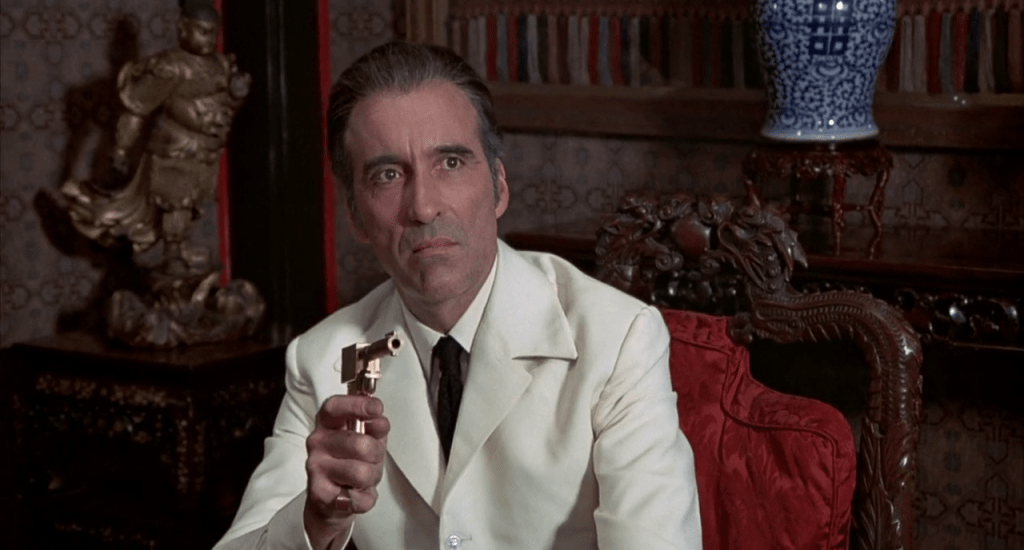
5. Scaramanga, The Man With the Golden Gun (Christopher Lee, 1974)
Oh, Scaramanga. You slippery three-nippled assassin, you. You had a good thing going there for a hot minute. You put us on the edge of our seats anticipating your final duel with 007. Your aura of calm and authoritative demeanor let us know that you were not to be trifled with. But you had to go and get complicated, didn’t you?
Scaramanga is introduced as a lone wolf assassin: untraceable and deadly. The only things people know for sure are that he has a third nipple and a golden gun. We’re promised an assassin every bit Bond’s equal, and we get it. But the movie can’t stop complicating things. First, in direct contradiction to Scaramanga’s defining character trait (lone wolf assassin), he teams up with a Chinese gang and double-crosses its leader so he can take over. Because lone wolf assassins very selective about their jobs love taking public roles leading massive crime syndicates. Then there’s a ridiculous rigmarole about some solex agitator gadget Scaramanga wants to use for unclear nefarious reasons. The only explanation is that producers believed a Bond villain wouldn’t be taken seriously if world domination weren’t on the table.
Oh, Scaramanga. You were so much more interesting when you weren’t overly complicated. If only the creative minds behind The Man With the Golden Gun had trusted you (and actor Christopher Lee) to sell the fascinating character you were.
4. Kananga, Live and Let Die (Yaphet Kotto, 1973)
Kananga could have gotten overly complicated like Scaramanga, but narrowly avoids the curse. He has dual identities in the first half of Live and Let Die, but at least there’s a reason for it that doesn’t make your brain hurt. First, he’s Kananga, respectable Prime Minister of a fictional Caribbean island. Second, he disguises himself as an American drug lord named Mr. Big to cover up his more unseemly preoccupations. In both guises, Kananga is bad to the bone. Played by Yaphet Kotto, he’s also a scene-eating larger than life badass perfectly in line with classic Bond baddies. There are elements of Live and Let Die that could have tipped toward the ridiculous, and it’s performances like Kotto’s that keep it grounded. More importantly, Kananga was the first nemesis of the post-Blofeld era. The creative minds behind the series were undoubtedly terrified by the loss of their chief villain, but Kananga made it very clear that there was life after Blofeld.
Kananga also broke a color barrier in the Bond franchise that has yet to be broken again. This is especially troubling after allegations that Kotto was barred from the film’s premiere and press tour because producers feared public backlash if it was revealed that the Bond villain was black.
3. Ernst Stavros Blofeld, On Her Majesty’s Secret Service (Telly Savalas, 1969)
Who loves ya, baby? Donald Pleasance may have given the most iconic Blofeld performance, but in my opinion it was Telly Savalas (TV’s Kojak) who brought him to life best. Savalas oozes menace and charisma from every pore. He makes you go along with what should have been one of the series’ most convoluted schemes (we don’t need to go into details but it involves genealogy, an allergy clinic, brainwashing, and biological warfare). As Blofeld, Savalas is far less over the top than Pleasance and it actually works. You never for a moment believe Pleasance’s Blofeld could pass in normal society because the man is so ridiculously batshit insane. Savalas’ Blofeld is charismatic enough to lure you in and make you think he could take over the entire world without you noticing he’d already made his big move. That’s danger. That’s brilliance. That’s Blofeld.
2. Auric Goldfinger, Goldfinger (Gert Fröbe, 1964)
Auric Goldfinger is the Augustus Gloop of Bond villains: spoiled, German, a little clumsy, and on the chubby side. This is a guy who takes time out of his busy schemes to cheat at cards. That’s pretty much the dictionary definition of dickhead. Yet somehow this works. Spectacularly well, in fact. That spoiled righteousness is exactly what makes Goldfinger so intriguing. All Bond villains have obsessions and eccentricities. What most are lacking is appeal. Filmmakers spend so much time making superficially interesting bad guys that they take depth for granted. Goldfinger has the ‘it’ quality all Bond villains aspire to. They tried to force it on Blofeld with wildly variable results. Goldfinger just has it. He also has the iconic moment when he secures 007 to a table, activates a laser slowly moving toward Bond’s prized package, and intones “I expect you to die.” If Goldfinger has a flaw, it is that actor Gert Fröbe was dubbed–meaning that not all credit for the performance is his. Still, Fröbe gives Goldfinger presence to spare.
Are you noticing how many of the top ten Bond villains came from the early years? Seven of them come from the first nine Bond movies alone. There was a pretty significant dip in quality for a long time. It took almost fifty years for us to go from Goldfinger to the villain who stole his thunder.
1. Silva, Skyfall (Javier Bardem, 2012)
If Goldfinger is the Augustus Gloop of the Bond series, Silva is the Lord Voldemort. You don’t even want to mention his name for fear that he might show up. Like Goldfinger, Silva has the intangible ‘it’ quality all Bond villains aspire to, but Silva has a more menacing air about him. Severine warns Bond that he’s never known fear like him. In most cases this would be grandstanding. Silva delivers. He arrives with an insane monologue–undermining Bond’s qualifications and everything he knows about M, makes a pass at 007, and murders Severine in one of the most cold-blooded displays of violence in a series that attempts such moments on a regular basis. And that’s just in Silva’s first moments onscreen. There’s much more mayhem to come.
The real genius is that Silva is a twisted version of Bond. It’s a concept the series attempted before but never really committed to, most notably with GoldenEye‘s Alec Trevelyan. It’s a brilliant move because it sets Silva and Bond on an equal playing field. He has the same training. The same skills. He knows the ins and outs of MI6. He understands 007, and he will use that knowledge to burn everything 007 has to the ground. No mercy. I called Silva the Voldemort of the Bond series, but perhaps it would be more apt to call him the Joker to Bond’s Batman. Silva just wants to watch the world burn.
Real stakes, that magical ‘it’ quality, and real consequences. Now that, ladies and gentlemen, is James Bond’s ultimate nemesis. Spectre made an unfortunate attempt to retcon all the Bond villains from the Daniel Craig movies–including Silva–into being pawns of Blofeld and Spectre. That was unfortunate. It gutted Silva in order to puff up Blofeld. I choose to pretend Silva was left out of that retcon. Let Le Chiffre and Dominic Greene be the patsies. Silva deserves to stand on his own.
For more, check out my Bond Project page. Up next: Every Bond Girl, Listed and Ranked.
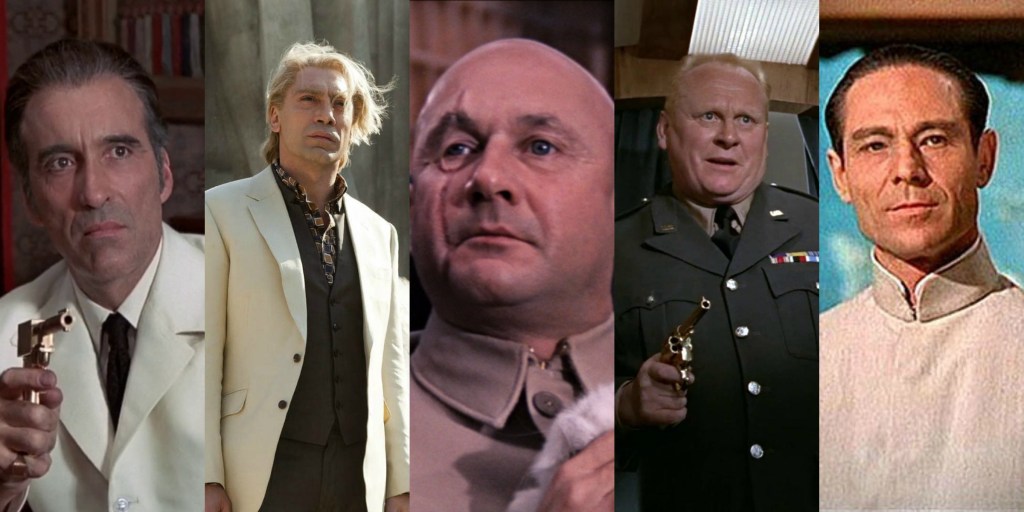

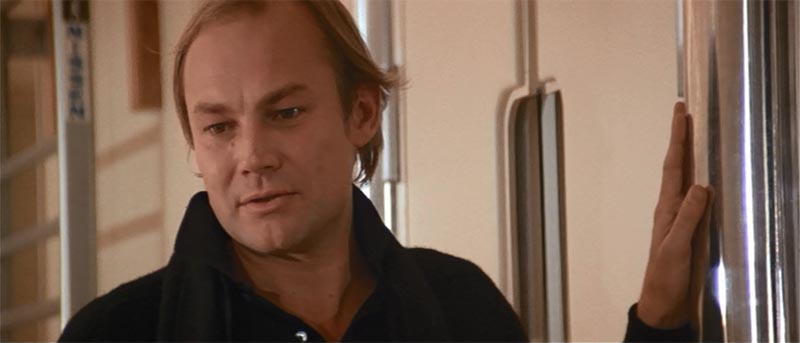


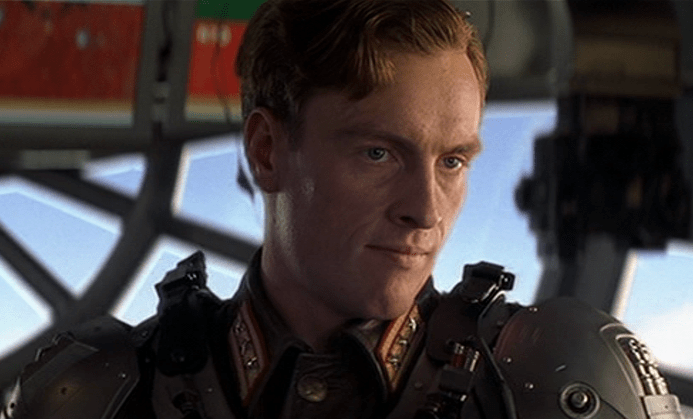

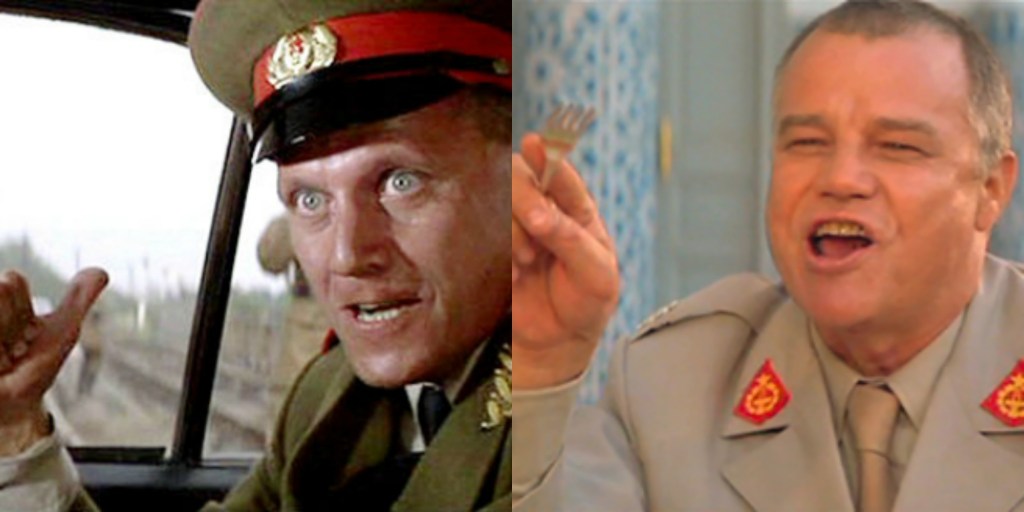
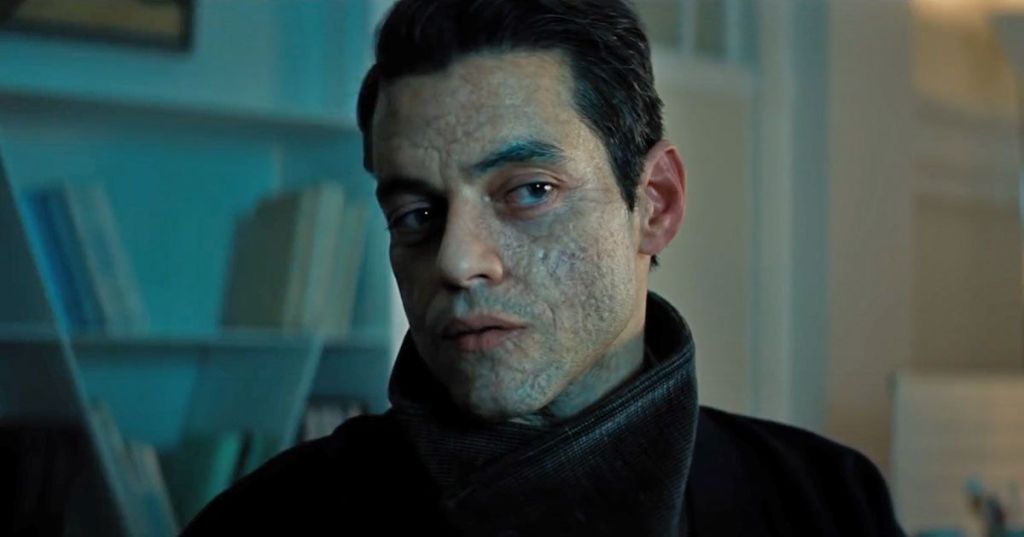



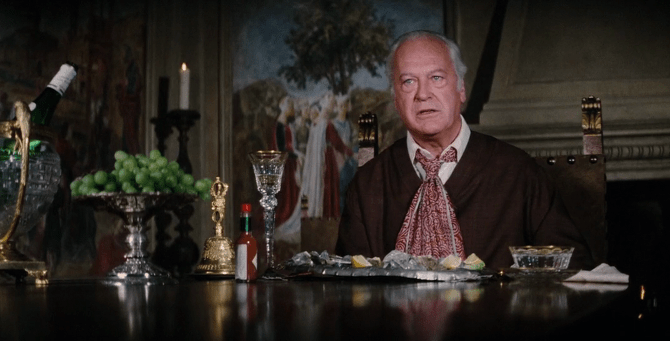
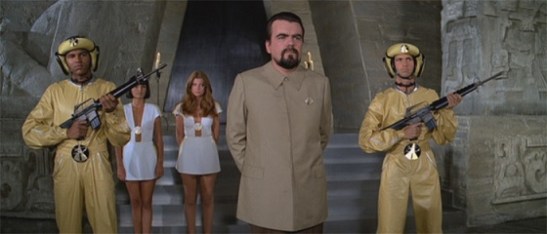

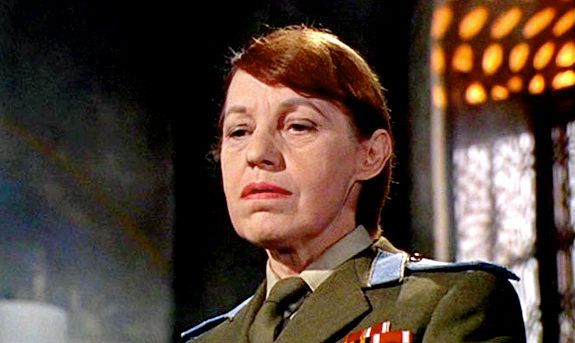
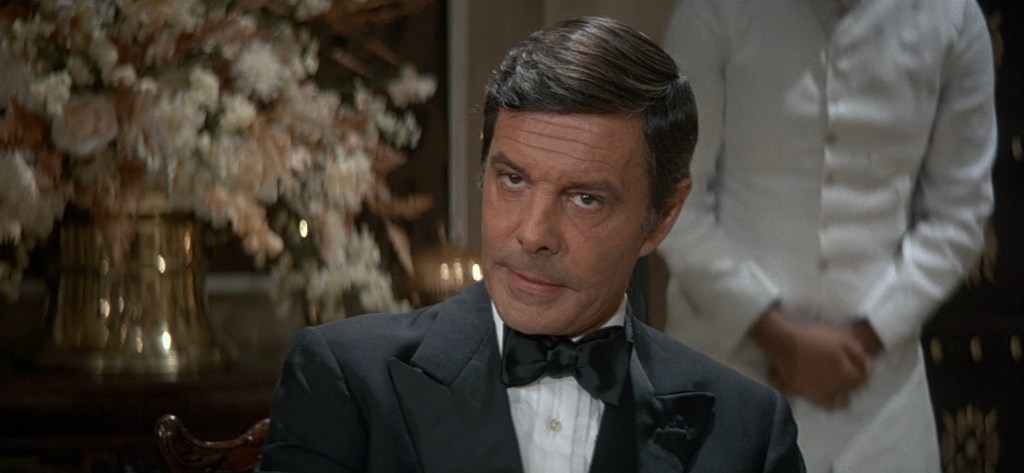

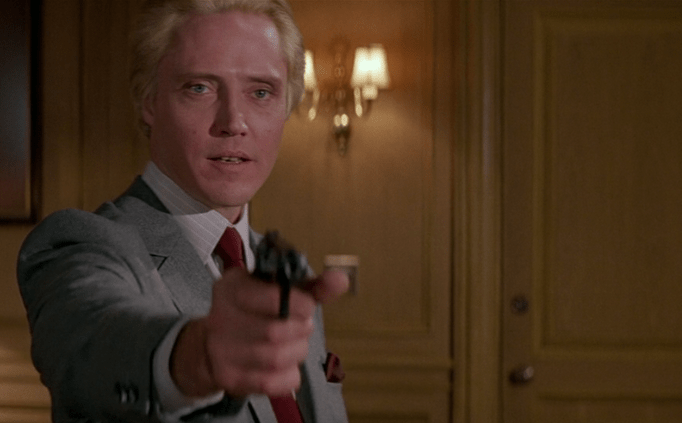
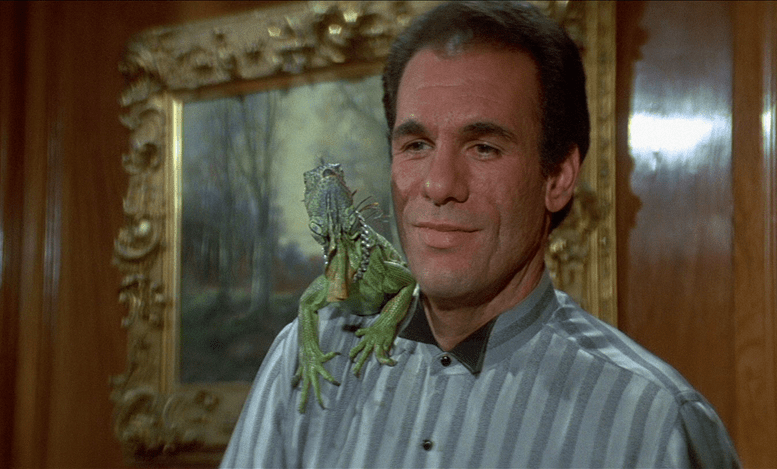
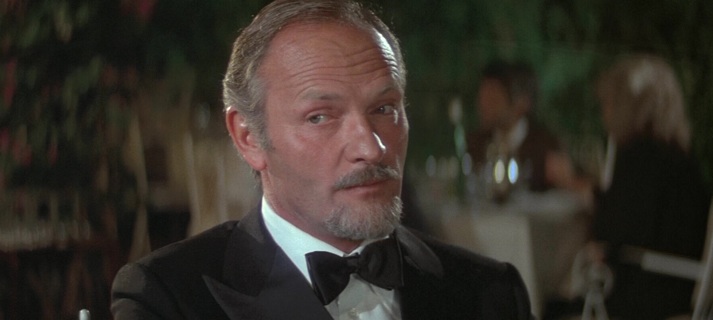
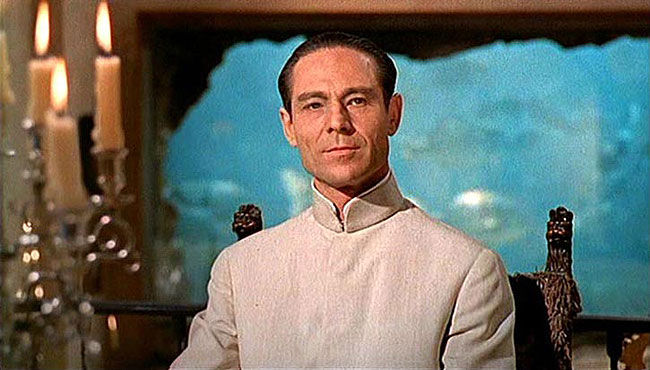
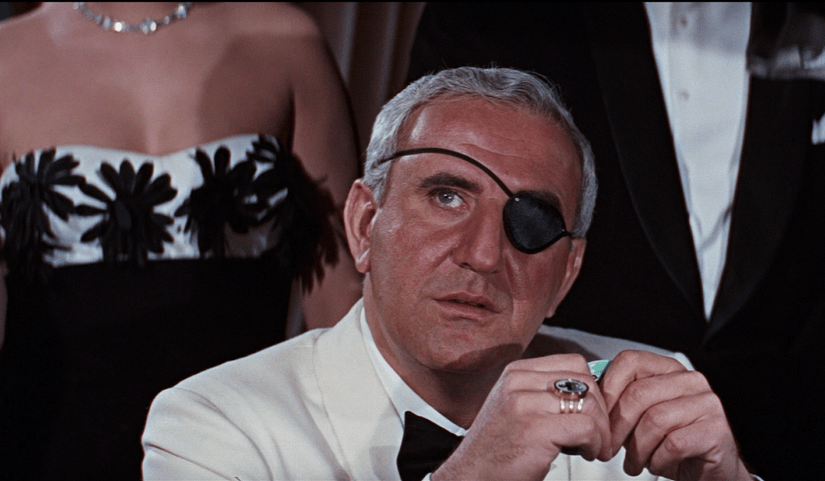



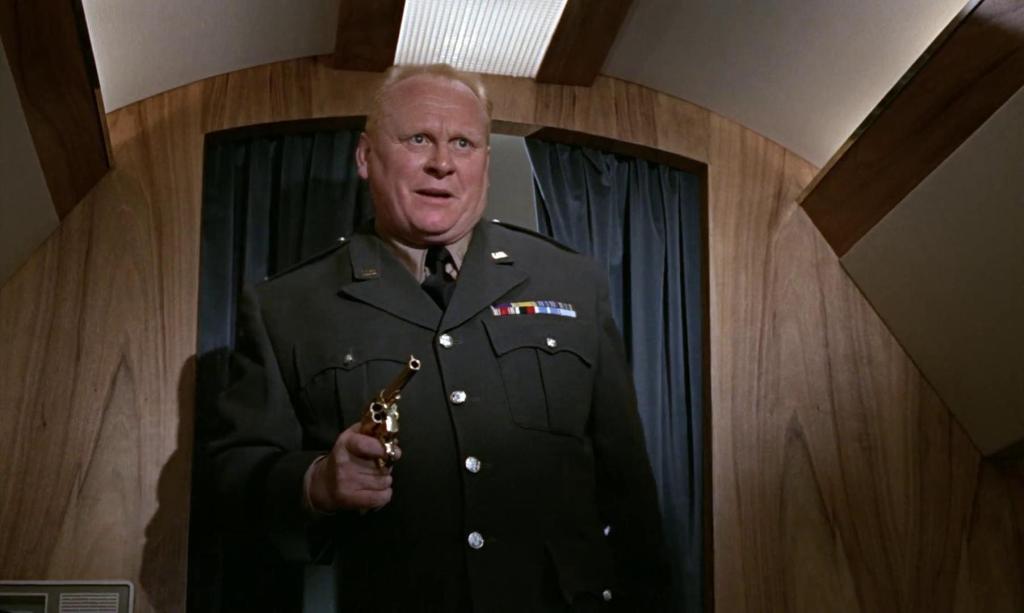

I almost agree fully with your list. As i got on the number three, i got worried. Where is Silva?, i asked myself…but then you had him at the first spot. I loved him. A Bond Film can only be as good as its villain. And skyfall nailed it. Waiting to see Spectre, I love that Bond is going dark!
https://motionpictureaficionado.wordpress.com
LikeLike